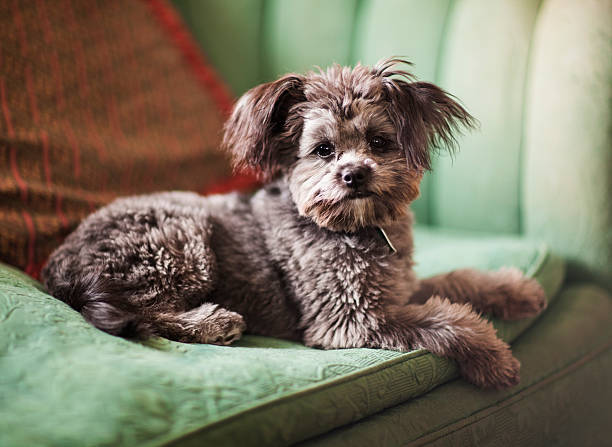The Ultimate Guide to Hypoallergenic Dogs: Allergy-Free Furry Friends

The Ultimate Guide to Hypoallergenic Dogs: Allergy-Free Furry Friends
Introduction
In recent years, hypoallergenic dogs have gained immense popularity. But what does “hypoallergenic” really mean, and why are these dogs becoming the go-to choice for allergy sufferers? This comprehensive guide will walk you through everything you need to know about hypoallergenic dogs, from understanding pet allergies to choosing the perfect breed for your lifestyle.

Understanding Pet Allergies
Understanding Pet Allergies and Hypoallergenic Dogs
Pet allergies are typically triggered by proteins found in a dog’s skin cells, urine, and saliva. These proteins can cause allergic reactions in people who are sensitive to them. Symptoms of pet allergies often include sneezing, a runny nose, itchy eyes, and skin rashes. Recognizing these triggers can assist you in better managing your allergies.
What Makes a Dog Hypoallergenic?
Hypoallergenic dogs are breeds that are less likely to provoke allergic reactions. These breeds usually have coats that shed minimally, produce less dander, and may have different proteins in their saliva and urine compared to other dogs. Although no dog is completely free of allergens, these breeds tend to be more tolerable for individuals with allergies.
Top Hypoallergenic Dog Breeds
Havanese
These small, playful dogs are known for their silky coats that produce less dander. They are friendly and adaptable, making them great companions.
Bichon Frise
With their curly, non-shedding coat, Bichon Frises are a popular choice for those with allergies. They are affectionate and cheerful dogs.
Poodle
Available in standard, miniature, and toy sizes, Poodles have hair that grows continuously, reducing shedding. They are intelligent and highly trainable.
Portuguese Water Dog
These energetic dogs have a waterproof coat that sheds minimally. They are loyal and great for active families.
Shih Tzu
Shih Tzus possess a long, flowing coat that sheds very little. These dogs are affectionate and make wonderful lap companions due to their friendly nature.
Schnauzer
Schnauzers are available in three different sizes and have a wiry coat that generates less dander. They are energetic and alert, making them excellent watchdogs.
Yorkshire Terrier
Yorkshire Terriers, or Yorkies, have a fine, silky coat that sheds minimally. Though small in size, they are bold and make excellent indoor pets.
Maltese
Known for their long, white hair, Maltese dogs shed very little. They are gentle and playful companions.
Basenji
Basenjis have short, fine hair and are known for their minimal shedding. They are independent and intelligent dogs.
Lagotto Romagnolo
This rare breed has a curly, water-resistant coat that sheds minimally. They are Affectionate and Love to Swim
These dogs are not only affectionate but also have a fondness for swimming.
Size: Select a breed that is suitable for your living environment.
Temperament: Make sure the dog’s temperament aligns with your lifestyle.
Grooming Needs: Be aware that some breeds may require more grooming than others.
Activity Level: Match the dog’s energy level with your own.
Grooming Tips for Hypoallergenic Dogs
Proper grooming is essential for maintaining a hypoallergenic dog’s coat and reducing allergens.
Regular Brushing: Brush your dog frequently to remove loose hair and dander.
Bathing Schedules: Bathe your dog regularly with hypoallergenic shampoo to keep their coat clean.
Ear and Teeth Care: Clean their ears and brush their teeth to prevent infections and maintain overall health.
Living with a Hypoallergenic Dog
Creating an allergy-friendly home is crucial for minimizing allergic reactions.
Managing Allergies with Regular Cleaning: Vacuum frequently and use dust mite covers on bedding.
Using Air Purifiers: Invest in high-quality air purifiers to reduce airborne allergens.
Training Hypoallergenic Dogs
Training is vital for any dog, including hypoallergenic breeds.
Basic Training Tips: Start with basic commands like sit, stay, and come.
Socialization: Expose your dog to various environments and people to build their confidence.
Obedience Training: Enroll in obedience classes to reinforce good behavior.
Diet and Nutrition for Hypoallergenic Dogs
A proper diet ensures your dog stays healthy and vibrant.
Choosing the Right Food: Select high-quality dog food that meets their nutritional needs.
Special Dietary Considerations: Some hypoallergenic breeds may have specific dietary requirements.
Supplements: Look into options for enhancing joint health, as well as maintaining skin and coat quality.

Health Considerations
Stay aware of common health issues and preventive care.
Common Health Issues in Hypoallergenic Breeds: Research breed-specific health concerns.
Regular Vet Check-Ups: Schedule routine visits to monitor your dog’s health.
Vaccinations and Preventive Care: Keep up with vaccinations and preventive treatments.
Adoption vs. Buying a Hypoallergenic Dog
Decide whether to adopt or buy your hypoallergenic dog.
Pros and Cons of Adoption: Adoption can save a life and is often less expensive.
Finding Reputable Breeders: If buying, ensure the breeder is reputable and ethical.
What to Look for in a Shelter Dog: Evaluate the dog’s temperament and health before adopting.
Cost of Owning a Hypoallergenic Dog
Consider the financial aspects of dog ownership.
Initial Costs: Budget for adoption fees, initial vet visits, and supplies.
Ongoing Expenses: Factor in food, grooming, and medical expenses.
Budgeting Tips: Plan ahead to manage the cost of dog ownership.
Hypoallergenic Dogs for Families
Certain hypoallergenic breeds are especially great with kids.
Best Breeds for Children: Choose breeds known for their gentle and patient nature.
Introducing a Dog to Your Family: Take time to introduce the dog to all family members.
Safety Tips: Teach children how to interact with the dog safely.
Hypoallergenic Dogs for Singles and Seniors
Single adults and seniors can benefit from having a hypoallergenic dog.
Best Breeds for Single Adults: Look for breeds that are low-maintenance and adaptable.
Benefits for Seniors: Dogs provide companionship and can encourage physical activity.
Low-Maintenance Options: Consider breeds that require less grooming and exercise.
Conclusion
Hypoallergenic dogs can be the perfect solution for allergy sufferers who want a furry friend. By understanding what makes these dogs special, how to care for them, and which breeds are best suited for different lifestyles, you can find the ideal allergy-free companion
FAQs
What is the most hypoallergenic dog?
The Poodle, due to its low-shedding coat, is often considered one of the most hypoallergenic dogs.
Can hypoallergenic dogs still cause allergies?
Yes, hypoallergenic dogs can still cause allergies, but they typically produce fewer allergens.
How do I test my allergy to a specific dog?
Spend time with the dog and monitor your symptoms. You can also consult an allergist for testing.
Are hypoallergenic dogs more expensive?
Hypoallergenic dogs can be more expensive due to their popularity and specific breeding requirements.
Do hypoallergenic dogs require special care?
While they may have specific grooming and dietary needs, hypoallergenic dogs do not require significantly more care than other breeds.



